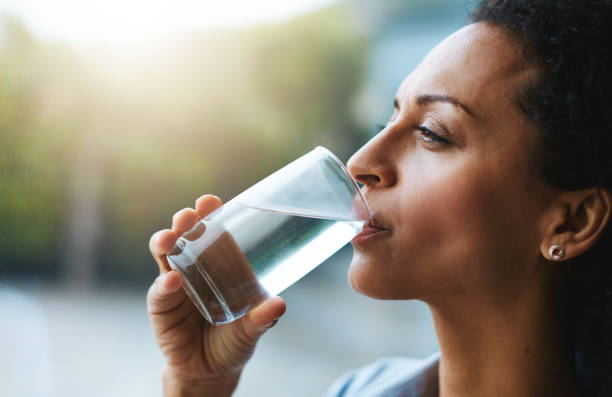HEXACHLOROBUTADIENE

Hexachlorobutadiene is used to make rubber, it is used as a solvent and to make lubricants, in gyroscopes, as a heat transfer liquid, and as a hydraulic fluid. Safe Home offers a few kits that provide drinking water testing for Hexachlorobutadiene in city and well water supplies.
Parameter Type: Drinking Water Testing for Volatiles
Parameter Name: Hexachlorobutadiene
What it is and Where it Comes From:
Hexachlorobutadiene, Cl2C=C(Cl)C(Cl)=CCl2, is a colorless liquid at room temperature that has an odor similar to that of turpentine. It is a chlorinated aliphatic diene with niche applications but is most commonly used as a solvent for other chlorine-containing compounds. Hexachlorobutadiene, or HCBD, is primarily produced in chlorinolysis plants as a by-product in the production of carbon tetrachloride and tetrachloroethene. Chlorinolysis is a radical chain reaction that occurs when hydrocarbons are exposed to chlorine gas under pyrolytic conditions. The hydrocarbon is chlorinated and the resulting chlorocarbons are broken down. This process is analogous to combustion, but with chlorine instead of oxygen. Drinking water testing gives you several benefits like peace of mind, identifying contaminants in your water, and insight into health concerns. Safe Home offers Laboratory drinking water testing kits for Hexachlorobutadiene, allowing you to collect your water sample and ship it directly to our EPA-Certified Laboratory. This platform of drinking water testing for Hexachlorobutadiene will give you an accurate level based on the lowest level of a parameter our instruments can detect (Method Detection Level). Safe Home drinking water testing for volatiles can be used for city and well water supplies. Drinking water testing should be done any time you notice a significant change in your water quality.
Health Effects:
Exposure to Hexachlorobutadiene can cause headaches, dizziness, tremors, and even a coma. May be a carcinogen in humans since it has shown to cause kidney cancer in animals. There is limited evidence that Hexachlorobutadiene is a teratogen in animals. Until further testing has been done, it should be treated as a possible teratogen in humans. Hexachlorobutadiene may damage the testes and decrease the sperm count in animals. Can irritate the lungs. Repeated exposure may cause bronchitis to develop with couch, phlegm, and/or shortness of breath. Hexachlorobutadiene may damage the liver and kidneys.
Solutions to Contaminant Levels:
You have completed the drinking water testing process, what Is the next step? A filter with granular activated carbon (GAC) is a proven option to remove certain chemicals, particularly organic chemicals, from water. GAC filters also can be used to remove chemicals that give objectionable odors or tastes to water such as hydrogen sulfide (rotten eggs odor) or chlorine. Reverse osmosis is a process that removes foreign contaminants, solid substances, large molecules, and minerals from water by using pressure to push it through specialized membranes. Here’s how reverse osmosis works. Unlike osmosis, which is a passive process, reverse osmosis requires external force (pressure) to work. Pressure is applied to a highly concentrated solute solution, such as salt water, to pass through a membrane to a lower concentrate solution. The membrane allows water to flow through but blocks out larger molecules, like contaminants. The reverse osmosis process leaves higher concentrations of solute on one side and only the solvent, or freshwater, on the other. Who do I need to contact to find out more information about water quality in my area? Every community water supplier must provide an annual report to its customers, known as a Consumer Confidence Report (CCR). The report provides information on your local drinking water quality, including the water’s source, contaminants found in the water, and how consumers can get involved in protecting drinking water. How often does the local public water system preform drinking water testing? Frequency of drinking water testing depends on the number of people served, the type of water source, and types of contaminants. Certain contaminants are tested more frequently than others, as established by the Safe Drinking Water Act. You can find out about levels of regulated contaminants in your treated water for the previous calendar year in your annual Consumer Confidence Report (CCR).


